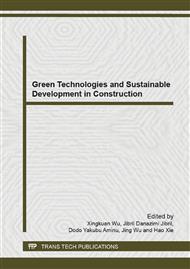p.202
p.207
p.211
p.215
p.220
p.224
p.229
p.233
p.237
Test Study of Transverse Prestressed Tendons (TPTS) on the Mechanical Performance of Hollow Slab Bridge
Abstract:
Structural defects and heavy traffic make the hollow slab bridge serious diseases, such as “Single Beam Bearing”. Transverse prestressed tendons (TPTS for short) is an effective methods to solve this problem. A detailed test study of hollow slab bridge modeled by plexiglass with TPTS is done in this article. The analysis parameters include the TPTS’ layout and the value of prestress. The test results show that TPTS can effectively even the transverse load distribution, and improve the integrity of bridges.
Info:
Periodical:
Pages:
220-223
Citation:
Online since:
May 2014
Authors:
Price:
Сopyright:
© 2014 Trans Tech Publications Ltd. All Rights Reserved
Share:
Citation:


